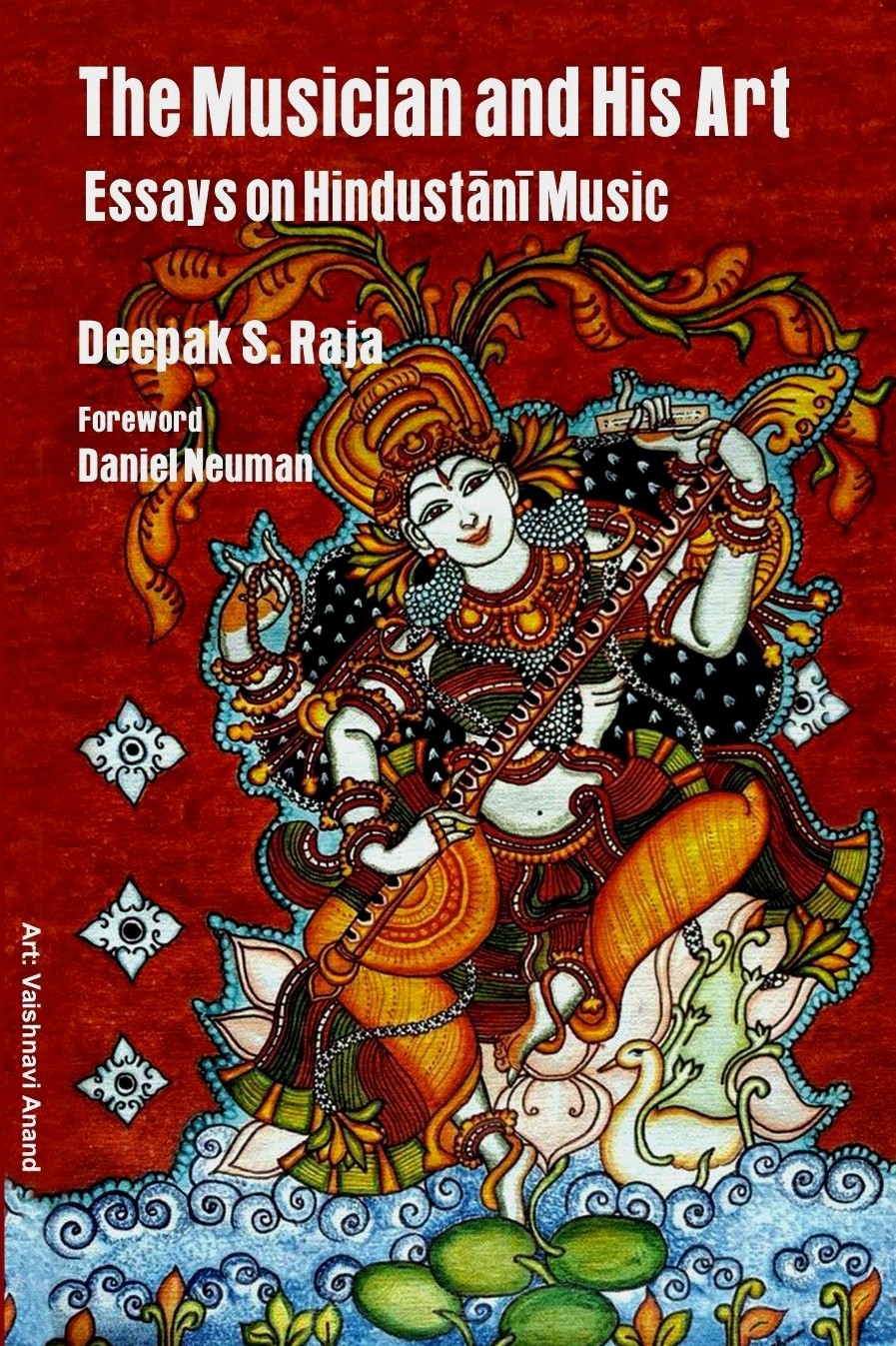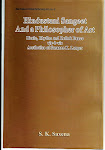In post-independence India, the Santoor has had the most meteoric rise on the classical music platform. In less than twenty-five years, it rose from near-oblivion to the peak of popularity. Amongst instruments currently in vogue, it is the only instrument played by the hammering action of sticks. Compared to the other vertical impact instruments -- like the Jaltarang, Tabla Tarang and Kashta Tarang – the Santoor had far greater melodic potential. But, it required the pioneering musicianship of Pandit Shivkumar Sharma to make the instrument succeed, while the others faded into history.
 |
| PEERLESS PARTNERS: SHARMA & ZAKIR HUSSAIN |
Sharma’s success has attracted a large number of musicians to the Santoor. Every new aspirant is busy exploring the untried possibilities of the instrument, leaving it in a dynamic state of evolution, but still without a credible challenge yet to Shivkumar Sharma’s ownership of the Santoor.
The Santoor
The Santoor is related to similar instruments in the Middle East, Central Asia, and Central Europe. Until recently, the Santoor was virtually unknown to Indians outside the Kashmir valley, where it was common as an accompaniment for vocal renditions of Sufiana Mausiqui (chants of the Sufi sects), a disciplined form of music with its own melodic entities (raga-s), and tala-s.
Some authors have linked the name to the Psantir, a similar instrument known to Mesopotamians since the pre-Christian era. The name allows both, Persians and Indians, to claim ownership of the instrument. The original Sanskrit name for it is “Shatatantri” [Shata = 100 + Tantri = stringed instrument], and the Persian name, now popular, is “Santoor” [Sad or San = 100 + Toor = strings]. The Indian claim is stronger because the Shatatantri Veena mentioned in ancient Indian literature is, in all respects, a convincing description of the Santoor. However, for want of a proven evolutionary link between the Shatatantri and the present-day instrument, scholars are unwilling to endorse this theory.
Pandit Shivkumar Sharma
Pt. Shivkumar Sharma (born: 1938) was brought up in distinguished family of musicians hailing from Jammu. Shivkumar’s father, Pt. Umadatta Sharma, was a Tabla exponent of the Punjab gharana and a vocalist trained in the Benares tradition under the celebrated Guru, Bade Ramdasji. Shivkumar was groomed by his father in vocal music as well as percussion. While still a teenager, Shivkumar had achieved national acclaim as a Tabla player. He switched to the Santoor upon the encouragement of his father.
While he was serving as Chief Producer on Kashmir Radio, Pt. Umadatta heard the Santoor, and saw in it a challenge worthy of his son. The instrument was, at that stage, an unsophisticated acoustic machine, quite unsuited for delivering raga-based music through modern electronic amplification. Shivkumar honed his art and made his debut on the art-music platform on that unrefined instrument. Initially, he managed to entice the film industry with the novelty and charm of its sound. But, the world of classical music remained skeptical about its future because of its limitations in handling raga-based melody. Sharma had to re-engineer the instrument, and develop new techniques of playing it to satisfy the expectations of discerning audiences.
Sharma first altered the tuning system. The then turned his attention to the posture and handling. Thereafter, he converted the traditional 4-string set for each note into a combination of 3-string and 2-string sets. In addition, he devised an original “Chikari” set. With these changes, he brought the instrument to a level of sophistication in delivering the quality of music he wanted to perform. After this, he standardized the stroke-craft in order to achieve superior acoustic sustain, greater continuity in the delivery of melody, and better control over the timbre and volume in the different movements of the Sitar/Sarod idiomn.
Shivkumar Sharma has collaborated with musicians like the flautist, Hariprasad Chaurasiya and the Hawaiian Guitar maestro, Brijbhushan Kabra, to produce some of the most memorable music of the 20th century. An album titled “Call of the Valley” recorded by the trio in 1968 with Manikrao Popatkar on the Tabla remained, for many years, the single largest selling title in the classical music segment of the Indian music market. Sharma’s close association with the Tabla wizard, Ustad Zakir Hussain, has set new standards of compatibility between musicians and their percussion accompanists. Sharma’s scores for feature films like "Darr", "Silsila", and "Lamhe", have topped the charts.
Shivkumar Sharma’s stature is well acknowledged. He is the recipient of many prestigious awards like Padmashree, Padma Vibhushan, Sangeet Natak Academy Award, Honorary Doctorate from the University of Jammu, Ustad Hafiz Ali Khan Award, Maharashtra Gaurav Puraskar, etc. He also has an honorary citizenship of the city of Baltimore, USA.
Sharma’s music
Sharma’s stature as a musician is substantially supported by his impeccable command over raga grammar. This has also contributed to the stature of his instrument. Whether it be common, non-controversial raga-s, or rare and esoteric raga-s, Shivkumar Sharma’s renderings are found to fastidiously follow documented raga-grammar.
Sharma modeled the architecture of his music after the dominant idiom of the Sitar and Sarod in the 1950s with a substantial dependence on Teental bandish-es. In later years, he enlarged his repertoire, relying more on Jhaptal and Roopak bandish-es. During one of my interviews with him, he admitted an acute awareness of the fact that, being impact-driven, his instrument has an inherent bias towards rhythmicality. He therefore made a conscious and sustained effort to ensure that his music would pursue “melody -- not at the cost of rhythm, and rhythm -- not at the cost of melody” [his own words].
In his approach to melody, Sharma has veered more towards the modern language of the Sarod than the Sitar. This was to be expected because the Sarod also relies on multiple-string melodic execution, and Sarod strokes have a percussiive punch that the Sitar does not have. In order to exploit these features, Ustad Ali Akbar Khan had liberated Sarod music from traditional phrasing by introducing kaleidoscopic patterns. The kaleidoscopic pattern consists of an interesting, but often random, juxtaposition of swara-s, either in pairs or in isolation. The selection of these swara-s is consistent with the swara material of the raga. But, their sequencing and spacing do not necessarily define melodic contours, therefore being, in some sense, raga-neutral.
These patterns were ideal for the Santoor because it has a different string-set for every note, thus enhancing their bewildering quality. With the adoption of kaleidoscopic patterns on the Santoor, Sharma has substantially accelerated the process commenced by Ustad Ali Akbar Khan – that of freeing instrumental music from the traditional reference point in vocal music. In the broader, historical context, this would appear to be the most significant facet of Shivkumar Sharma’s – and the Santoor’s -- contribution to Hindustani music.
© Deepak S. Raja 2011

Thus spake Shivkumar Sharma
Excerpts from an interview with Pt. Shivkumar Sharma
Interviewer : Michael Robinson ,
Pacific Palms, City of Industry, California | September 15, 2003
“I’m conscious of the fact that I am playing for certain people who have come from near and far places. They have got certain expectations from this concert, and have got to finish my music within a certain period of time. But once I start playing, and everything is OK, there is no distraction, sound system is perfect, not distracting me, and everything goes well, then after a while I forget that I am on the stage. And music for me is meditation. And I don’t go on the stage, and I don’t make an effort that I’m an entertainer, or I’m there to entertain people. I feel music for me is a kind of meditation, is a kind of prayer which gives me a spiritual high. It gives me a kind of bliss which I am sharing with the audience.
“After the concert, if everything goes well, the most difficult part for me is when people come and want to talk to me… I’m not in a position to talk. It takes me a while to come back to this mundane world. After I finish concert, and I come back to my room, and then I can’t express the kind of joy, the kind of energy that goes in my body…when everything goes well, and music is…and then when I come back, then I start thinking OK, how I played, where I goofed up, what happened technically, what was not right. Those things come later on.
“How I handle this thing, this praise from different quarters. This, again, I got from my father and from my guru. The spiritual training. Where santoor is today, I think it's nothing short of a miracle. And it's enough to make a man mad if one starts thinking, "I have done this." It never comes to my mind, that whatever happened with santoor -- I have done it. Honestly, even in my own thoughts, forget about talking to other people, that we talk in mundane way, In my mind, I know very clearly, I'm just an instrument, I'm just a medium. God chose me, a medium, to create this music through me. I'm not doing it.
“When I go to a concert, I do my meditation, and I pray before the concert. That's why before the concert I need some time for myself. So I should be alone in my room, and I do some meditation before I leave. And I pray that it's in Your hands, You have to do this. To help. And I totally surrender myself. So this music happens. I am not doing it. And that is why when you rightly watched me on the stage, and felt that thing. Because I honestly believe some supernatural power, no matter what we call it, God, Bhagwan, Baba or anyone, is doing this through me, and credit goes to Him, not to me. And when I think, when I come back, again I meditate when I'm alone, and I thank, "Thank you very much for making me a medium to do this."
Selected discography:
ECLP 2297 Shivkumar Sharma + Brij Bhushan Kabra: Bageshri, Jhinjhoti
ECLP 2346 Shivkumar Sharma: Lalat, Bhairavi, Kalavati, Raga Pahadi
ECSD 2382 Shivkumar Sharma + Hariprasad Chaurasia+ Brijbushan Kabra,+ Manikrao Popatkar: Call of the valley
ECSD 2389 Shivkumar Sharma: Classical melodies on the santoor
ECSD 2457 Shivkumar Sharma: Madhuvanti, Jog, Dhun, Folk Tune
ECSD 2747 Shivkumar Sharma + Hariprasad Chaurasia. Yugal Bandi
ECSD 2784 Shivkumar Sharma: Sohni, Mishra Tilang)
PSLP 1481-1482 Shivkumar Sharma In Concert
For an exhaustive study of the Santoor and Pandit Shivkumar Sharma's contribution, please read: "Hindustani Music -- a tradition in transition", by Deepak Raja. DK Printworld, New Delhi, 2005.







